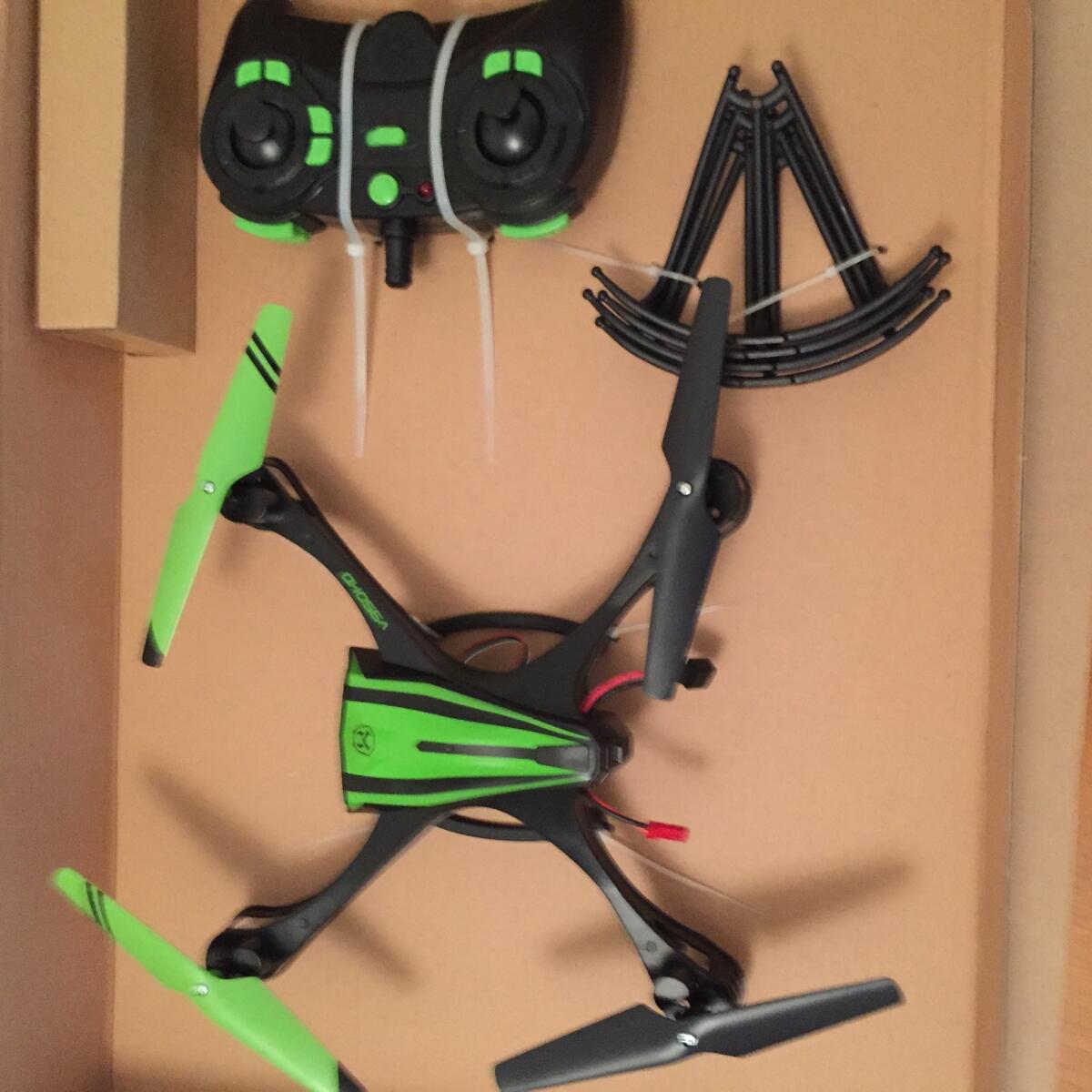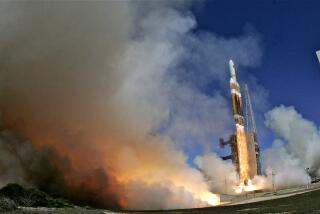Opinion: How I bought a drone and immediately became a danger to society

The Sky Viper, still in the box, before a flight that went sideways.
- Share via
I took my maiden drone flight on a chilly Sunday afternoon last month — and instantly became part of the problem of irresponsible drone operators. Within seconds, I lost control of my HD video-equipped Sky Viper. What’s worse, I knew better.
In fact, just a few months ago, we had written an editorial outlining some of the problems with the proliferation of recreational drones and the virtual lack of regulation of the machines and the problems that was causing. Unidentified operators of hobby drones were interfering with aerial firefighting operations, buzzing commercial jets, crashing into crowds. In October, a drone ran into power lines and knocked out electricity to hundreds of West Hollywood homes and businesses.
No surprise, really, since you don’t need any training or even understanding of the rules of airspace to launch your drone. For example, no flying above 400 feet or within five miles of an airport. And don’t fly over people. I knew these things from my reporting, and even I got into trouble immediately because I underestimated the power and sophistication of a toy I bought for $80 at Toys R Us.
I’d like to say I read the directions fully before I charged the drone’s battery and stuffed four AAAs into the back of its controller. But I didn’t do much more than scan the manual, noting how to make it go up and down. I’d figure the rest out later.
Sitting in my backyard, I flipped the joystick up for lift. The little green-and-black quadracopter hummed to life and ascended steadily and rapidly. More rapidly, in fact, than I imagined was capable. I watched stupidly for a few seconds as it gained altitude with terrifying speed, suddenly panicking when I realized how high it was, which was ... well, I don’t know how high. I couldn’t tell you 40 feet from 400. But it was higher than the roof of the house.
My mind went blank, and I couldn’t remember how to make it come back down. Instead, the drone took a sharp turn, and I watched with growing dread as it zoomed over the house and out of line of my sight, thus breaking a basic operating rule. I had no idea how far it could fly once it left my vicinity.
This story ended well. The drone crashed into a bank of trees on the side of the house, where it remained stuck until strong winds brought it down. I found the drone the next morning, lying on the ground relatively unscratched and ready for its next flight. It was a relief after spending a few hours worrying whether it had landed on anyone or anything.
I had a new understanding of just how easy it is to become one of those troublemaking drone operators we keep reading about.
After that, I’ve practiced flying in the garage and in the desert. While it’s simple to get these machines flying, it’s not as easy to pilot them. At least not for me. In fact, I think the last crash-landing may have damaged my drone for good. Maybe that’s OK. These machines are pretty cool, but I’m still a little scared of what I can (accidentally) do with one.
Follow me @marielgarzaLAT
Follow the Opinion section on Twitter @latimesopinion and Facebook.
More to Read
A cure for the common opinion
Get thought-provoking perspectives with our weekly newsletter.
You may occasionally receive promotional content from the Los Angeles Times.










